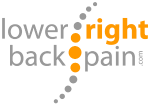By stretching and strengthen your low back muscles not only heals back issues but can help prevent them from happening in the first place. It is also important to exercise the back's supporting/adjacent muscles of the legs, hips and abs.
Muscles are a major factor in back anatomy and the health of this structural unit. The bones of the spine are designed hold a person upright. These bones are stacked on top of each other like a stack of cookies. This stack is held in position by muscles and tendons. If the muscles and tendons are weak the cookies slip out of place. If the muscles are too rigid activity will
If these muscles are weak, the vertebrae can move and can cause pain. Muscles and ligaments can get strained and nerves around these structures can become pinched.
Pain is sometimes caused by muscles and stretching them will provide relief. As we age our muscles become less flexible and more prone to injury. The old saying “use it or lose it” rings clear. It is best to keep use muscles regularly and keep them flexible.
Although most people think the back muscles are to blame on low back pain, however, other muscles are often the culprit. Having tight hamstring or weak abdominals can allow the back to move into bad posture and lead to problems and pain. Similarly, prolonged sitting can lead to tight hip flexors which also set the stage for low back problems. The goal is to keep the body active and flexible to avoid injury and pain.
Aim to get some sort of exercise every day. If all else fails take a 20 minute walk around the block followed by some light stretching. Now who doesn’t have time for that?
When stretching your muscles go about it gently and don’t force or bounce. Hold each position for a minimum of 15 seconds and gradually build up to 30 – 40 seconds (for your major muscles). As you become more flexible you can flex your muscle while in the stretched position for a deeper stretch.
